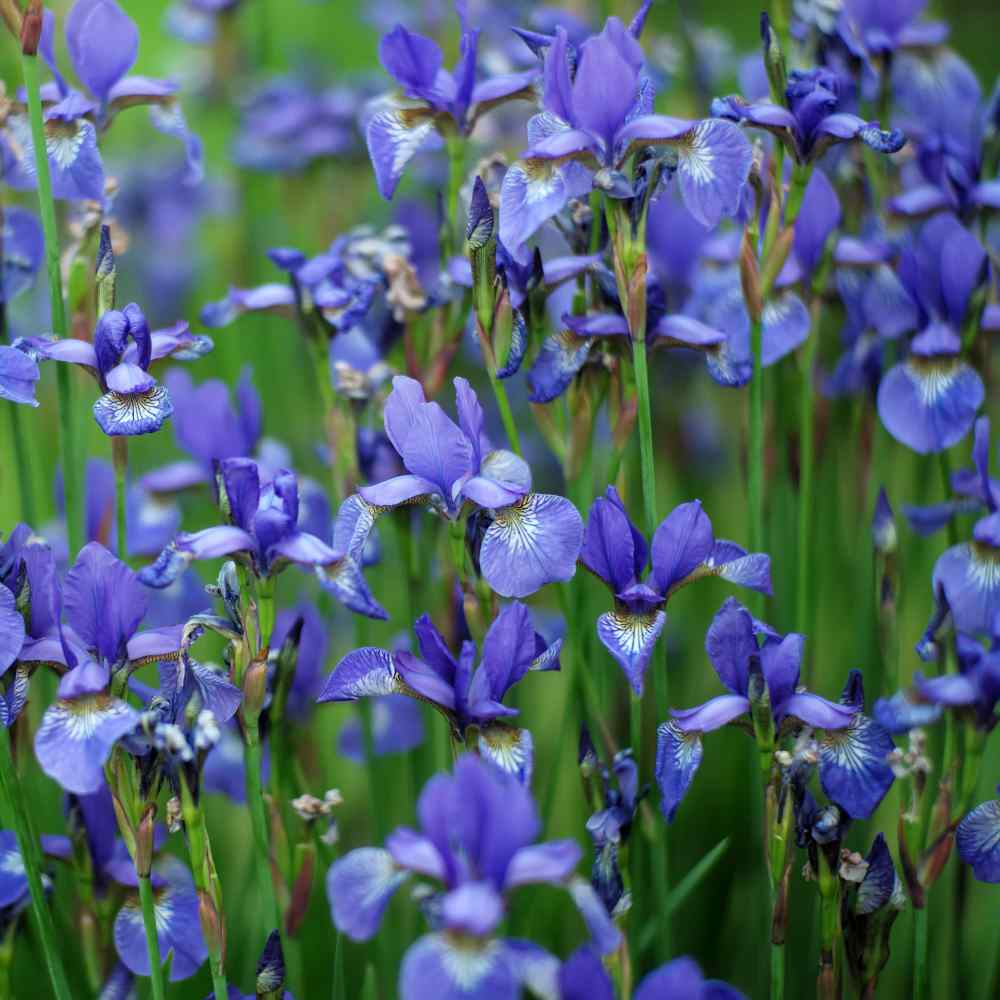Iris Seeds
The word "iris" comes from Greek, meaning "rainbow." The mythical Iris of Greek legend personified the rainbow, acting as the messenger from heaven to earth. This flower also appears in ancient Egyptian sculpture and tradition, as a symbol of life and power. Native Americans and early settlers found a practical use for this plant, using the valuable fibers from the leaves to make ropes, nets, and string.
It's a magical time when irises unfurl their pencil-slim buds to reveal a kaleidoscope of color in spring. Once commonly called flags, these perennials flourish in USDA Zones 3-9, where winter temperatures dip below freezing and allow the plant to go dormant before next year's growth.
Useful gardening information
The distinctive flowers have three large outer petals called "falls" and three inner upright petals called "standards." The falls may have beards or crests. Bearded iris are so-called because they have soft hairs along the center of the falls. In crested iris, the hairs form a comb or ridge.
Most irises flower in early summer. Some, mostly bearded hybrids, are remontant, flowering again later in the summer.
Irises need at least half a day of sun and well-drained soil. Without enough sun, they won't bloom.
They prefer fertile, neutral to slightly acidic soil. If your soil is very acidic, sweeten it with a bit of lime, and forbear summer watering, which can lead to rot.
Bearded irises must not be shaded by other plants; many do best in a special bed on their own.
Soil drainage is very important. Loosen the soil with a tiller or garden fork to a depth of 12 to 15 inches, then mix in a 2- to 4-inch layer of compost.
Links to useful information on the web:
How to grow Iris
How To Grow Iris From Seeds

TWT151 Wild Blue Iris ( Iris Missouriensis )
Hummingbirds love the blue, showy flowers of the Wild Blue Iris. Grow this perfectly shaped miniature Iris from flower seed for your garden, and enjoy the 3 inch blooms that most often are in shades of blue to violet. Wild Iris typically only grows approximately one foot tall including the foliage and flower stalk; however, it is not uncommon to see them in meadows up to two feet tall. Wild Iris is also known as Rocky Mountain Iris, Wild Blue Flag Iris, and Western Blue Flag Iris.
Rocky Mountain Iris is often found in meadows and stream banks where there is plenty of moisture. It has low tolerance to drought and prefers regular waterings. This perennial Iris can spread from thick rhizomes. Western Blue Flag plants are free-flowering and long-lived. They are very carefree and provide a wonderful display of color. A perennial plant for zones 2-9.
Share a growing tip and help other gardeners!
Click on the Contact Form link, place "Tip" in the name line and fill in your information. If we accept your Iris growing tip, we will post it on this page.


